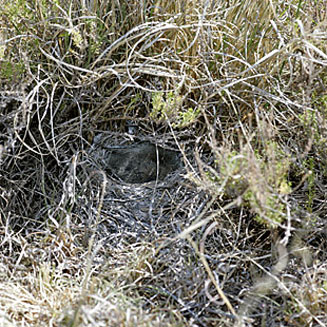|
Anthus pseudosimilis (Kimberley
pipit)
Kimberleykoester [Afrikaans]; Pipit forestier [French]
Life
> Eukaryotes >
Opisthokonta
> Metazoa (animals) >
Bilateria >
Deuterostomia > Chordata >
Craniata > Vertebrata (vertebrates) > Gnathostomata (jawed
vertebrates) > Teleostomi (teleost fish) > Osteichthyes (bony fish) > Class:
Sarcopterygii (lobe-finned
fish) > Stegocephalia (terrestrial
vertebrates) > Tetrapoda
(four-legged vertebrates) > Reptiliomorpha > Amniota >
Reptilia (reptiles) >
Romeriida > Diapsida > Archosauromorpha > Archosauria >
Dinosauria
(dinosaurs) > Saurischia > Theropoda (bipedal predatory dinosaurs) >
Coelurosauria > Maniraptora > Aves
(birds) > Order: Passeriformes
> Family: Motacillidae > Genus: Anthus
Distribution and habitat
Thought to be endemic to southern Africa, occurring from
south-eastern Namibia through to southern Botswana and northern and central
South Africa. It generally prefers short, open grassveld with patches of bare
ground, Karoo scrub and short vegetation around pans or along dry riverbeds.
Food
Diet unknown, but it is presumed to consist of mainly
insects plucked from the ground.
Breeding
- The nest (see image below) is a grass cup lined with rootlets and other
fine plant material, typically concealed at the base of a grass tuft.
 |
|
|
Kimberley pipit nest with chick, Cyferfontein,
Springfontein, South Africa. [photo Warwick Tarboton ©] |
|
- Only two clutches of eggs have been recorded, with two and three eggs laid
in the period from October-November.
- Little is known about the chicks, other then that they leave the nest
after at least 16 days.
Threats
There is no information on its population numbers, so its
conservation status is unknown.
References
-
Hockey PAR, Dean WRJ and Ryan PG 2005. Roberts
- Birds of southern Africa, VIIth ed. The Trustees of the John Voelcker
Bird Book Fund, Cape Town.
|
